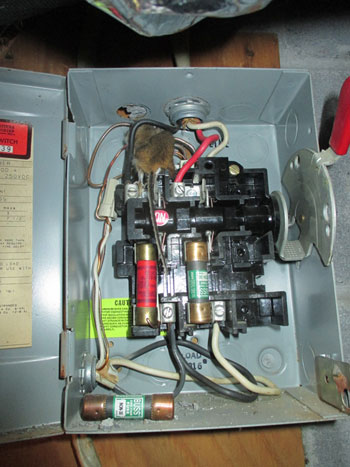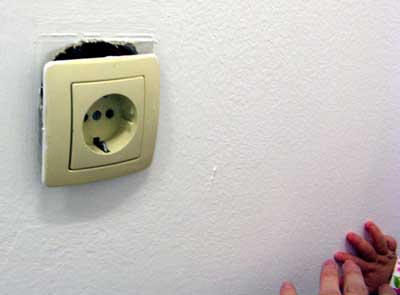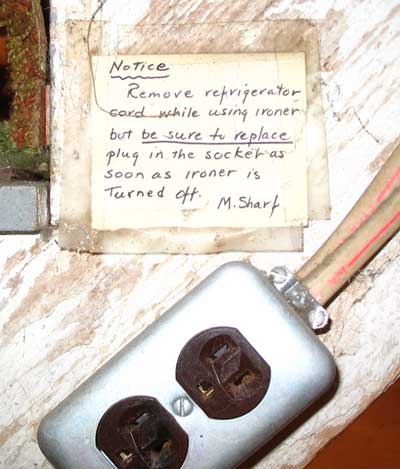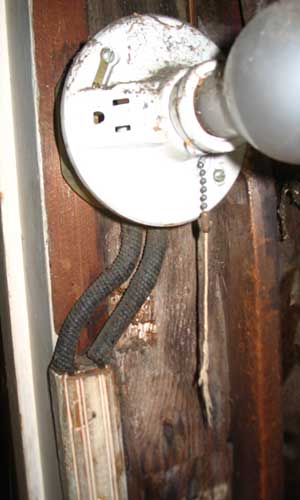
How you know when you need electrical work (From the historical archives
Don't try any of these at home.

Sadly, this mouse met his end by electrocution in this well pump disconnect box. He had his left rear foot on one of the 240 volt connections, and his front feet on the ground wire. Other interesting details of this box, are 1) the missing knockout at the top of the box, allowing the admittance of small creatures. 2) the interconnection of ground and neutral wires in two places (on left and at the top) allowing current to flow back to the main panel on the uninsulated ground wire, and 3) the small jumper wire just visible at the bottom of the red fuse which completely defeats the protection of the fuse. All examples of unlicensed DIY work.

This "portable ground" was found by a colleague of my daughter Emily at
a shipyard in Florida. It was being used by a welder. Of
course current cannot flow into the ground through an insulated plastic bucket.

These are two buried splices I found at a home in Albemarle County. Case study here.

My daughter took these pictures in the airport in Split, Croatia, where the voltage is 220, not 120. This unsecured receptacle was located less than a foot above a changing table, where little fingers could easily reach the connections inside. November 2011

My granddaughter, Matilda
I found this in a refugee camp in Southern Nicaragua. It is an outdoor fluorescent fixture fabricated from four fluorescent tubes taped or lashed to a tree branch; the ballast must be out of sight below. . I didn't see it in operation, but I wouldn't be surprised if it worked. November 2009
I ran into this shower-water heater in a tourist cabin in Costa Rica. These are found all over, but this one was installed in an exceptionally interesting manner. The power comes in from the ceiling. The wires were too short, so there are taped joints to extend them to the exposed knife switch on the wall. The two heavy green wires are not grounds, but the power to the shower head. which is also spliced just inches from the shower head. The idea is that you heat the water just when you need it, which eliminates the need for hot water storage, but there is still the problem of safely running 240 Volt power into a shower enclosure. There is a three position switch (off/cold, cool, and warm), which is usually good enough for Central America. I actually used this shower, but I was ever mindful that I could easily reach up and touch any of the four splices, or the uninsulated knife blades, while I stood on the wet masonry floor in my bare feet. July 2009
This is a view from the side. Note the short green ground wire that is not attached to anything.

Notes to prevent circuit overload.
Found in June 2009

Wooden raceway (wire conduit). At one time this was up to code.
Found installed and working in June 2009

Edison receptacles: You can unscrew this plug adapter, and screw a light bulb (or a child can put his finger) right into the wall. At one time this was up to code. I found one of these beside a claw foot bathtub; you could sit in the tub, and put your left index finger right into the socket.
Found installed and working in June 2009